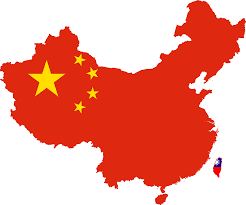A subtle shift in China’s price dynamics has caught investors off guard, suggesting that beneath headline figures there may be fresh forces at work.
June’s data offered a rare glimpse of upward pressure on consumer prices, barely breaking into positive territory after five months of decline, yet at the same time industrial goods continued to see steep discounts. The result has been a market response that feels at once cautious and quietly optimistic: domestic indices have ticked higher even as factory-gate inflation deepens.
The Shanghai Composite has inched up towards its strongest levels in months, while its counterpart in Shenzhen has shown even firmer footing. This movement has unfolded against a backdrop of mixed signals: on the one hand, consumer prices rose by just 0.1 per cent year-on-year in June, marking the first uptick since January and hinting at stabilising demand among households. On the other, producer prices plunged by 3.6 per cent over the same period, the sharpest decline since mid-2023, as firms continued to undercut each other in a bid to shift goods amid a sluggish domestic backdrop.
At first glance, these figures might appear to pull in opposite directions, yet they play into a wider narrative. The uptick in consumer inflation, however modest, suggests that measures taken to support spending, ranging from targeted subsidies to incentives for big-ticket items, are beginning to register with shoppers. Meanwhile, the slide in factory-gate prices underscores persistent challenges in the industrial sector, where global trade tensions and soft export orders have squeezed margins and forced companies to lower prices to move inventory. In effect, the gap between the consumer and producer price trends is laying bare the uneven nature of China’s recovery.
Investors, ever attuned to policy signals, have noted that Beijing has grown increasingly vocal about warding off damaging price wars, particularly in key sectors such as autos and electronics. By cautioning against aggressive discounting, authorities appear keen to prevent a race to the bottom that could further erode corporate earnings and undermine confidence. At the same time, warnings issued to trading partners in Washington over potential tariffs have injected an element of geopolitical risk into the equation, reinforcing the view that support measures may yet be on the horizon if tensions escalate.
Among individual names, companies linked to consumer technology and advanced materials have outperformed recently, reflecting anticipated gains from any pick-up in household spending. Manufacturers of high-end components have likewise seen firmer interest, as investors position for a rebound in both domestic orders and export demand should trade disputes ease. Even so, the broader market advance has been measured, with sector leadership rotating rather than concentrating in a handful of favourites.
This nuanced landscape suggests that China’s equity markets are no longer simply trading on broad-based stimulus hopes. Instead, they are parsing the details of price data and policy signals, seeking clues as to where pockets of strength may emerge. For long-term investors, the divergence between consumer and producer inflation could point to selective opportunities: areas where demand is firming, such as consumer staples and services, may offer steadier returns even as industrial firms grapple with margin compression.
Looking ahead, the direction of core inflation, which strips out volatile food and energy components, will be watched closely. A rise towards levels last seen over a year ago could bolster confidence in the sustainability of consumer demand, whereas a renewed lull might prompt further monetary easing. Economists are increasingly factoring in a potential rate cut by the People’s Bank of China later in the year, aimed at shoring up borrowing and investment activity. Such a move would likely lend additional support to equities, though timing and scale remain uncertain.
In this environment, patient investors might find merit in tilting portfolios towards companies that stand to benefit most directly from the consumer rebound, while maintaining exposure to select industrial players with the capacity to weather margin pressures. Active reassessment will be key, as the delicate balance between stabilising household spending and contracting factory output continues to evolve.
Fidelity China Special Situations PLC (LON:FCSS), the UK’s largest China Investment Trust, capitalises on Fidelity’s extensive, locally-based analyst team to find attractive opportunities in a market too big to ignore.











































